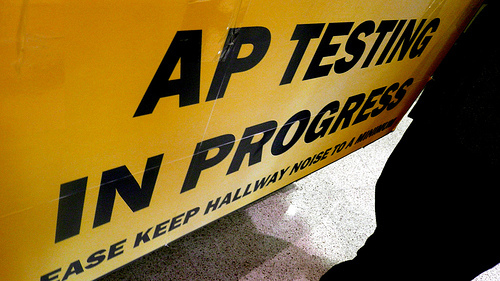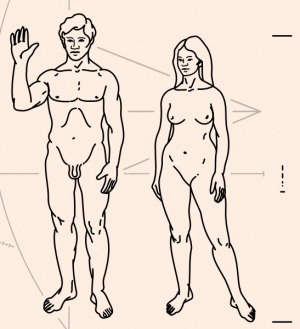
In 1986, Gene Baur took a stand against the exploitation of our fellow animals. He founded Farm Sanctuary, an organization which promotes animal welfare laws, rescues farm animals from slaughter, and shelters these animals in upstate New York and northern California.
Mr. Baur recently authored Farm Sanctuary: Changing Hearts and Minds about Animals and Food, a national bestseller.
He and his organization strive to improve conditions in factory farms and slaughterhouses. They recently won legislative victories in California, which has since banned various confinement systems and outlawed the force-feeding of ducks and geese to produce foie gras.
A dynamic orator, Gene Baur will speak tonight at 7 pm in the Kern Building. See the Facebook event for more details. Herbivores, omnivores, and carnivores alike should attend this event. You may gain an ethical perspective about what's really on your plate.

A quartet of wealthy alumni just donated $2.5 million to the Penn State University Libraries. This gift set a new donation record and will support the Pattee Library's new Knowledge Commons.
A major upcoming renovation, the Knowledge Commons will act as an information technology center within the library. Jeanette and John R. McWhirter and Ann and Peter G. Tombros are the generous donors behind these funds. Read the Penn State Live article for the details regrading their fascinating (and financially rewarding) career trajectories.
In addition to the joint gift of $2.5 million, the Tombros couple has offered $1.4 million to improve the University Libraries' collections of Classics and Greek Literature.
This fortunate turn of events is excellent news for our libraries. May the manifestations of these gifts expand our knowledge as university students.

Those of you who read the Collegian on Tuesday probably read about Dennis Shea, head of the Department of Health Policy and Administration and staunch objector to State Patty's Day. For you devout Onward Staters, you may know Dr. Shea better as the prolific commenter "GTWMA."
To the average college student, GTWMA may seem like a stringent fun-sucker beamed to the future from the temperance days of yore. But when compared to the shamrock-covered sloppy messes drunk at 10 am, the enlightened Dr. Shea wins the allegiance of many.
Dr. Shea has gained a following; the End The "State Patty's Day" Tradition Facebook group has amassed over 1,185 members (although the "official" State Patty's Day group has 9,390 members, roughly a quarter of the student body).
Read on for more.

The audience roared with applause and offered a standing ovation to the sextet, who graced the stage once again for an encore. The touring Monterey Jazz Festival performed in Eisenhower Auditorium last night, and they delighted the audience with intricate, energized melodies. The sextet included singer Kurt Elling, guitarist Russell Malone, violinist Regina Carter, bassist […]

Advanced Placement tests offer a number of advantages to high school students, including weighted GPAs and college credit. More students take AP tests these days, but more students fail them.
According to USA Today, AP enrollment jumped from 704,000 to 1.7 million students between 1999 and 2009. However, failing scores, defined as a 1 or 2 out of 5, rose from 36.5% to 41.5%.
Students' performances have shifted unevenly. Scores for AP Physics have generally increased, while scores for AP English Literature have dropped (reflecting the world's new infatuation with math and science).
Geography may also affect the high fail rates. In the South (roughly Texas to Delaware), nearly half of all AP tests earned a failing grade. This represents a significant statistical difference from the rest of the country.
New Mexico, Arkansas, Mississippi, and West Virginia contain the lowest scoring test-takers. In those four states, AP test-takers failed between 55% and 70.3% of all exams. Yikes.
AP credits fulfill many general education requirements and can improve one's college career immensely. Fewer gen eds can equate to early graduation and thousands of saved dollars. Fewer gen eds can also free up precious college time to take fascinating yet semi-irrelevant courses of one's choice.
The rigor of AP courses surely differs from high school to high school. However, an AP test fee is a great investment—as long as you pass the test.
See Penn State's AP course equivalencies for more details.
 After millennia of a male-dominated world, women have finally risen to the top. But some college admissions officers suggest that they've risen too high.
After millennia of a male-dominated world, women have finally risen to the top. But some college admissions officers suggest that they've risen too high.
Women now outnumber men applying to and graduating from college. They comprise 57% of college populations, and they may face discrimination for being too eager for a college education.
The College of William and Mary accepted relatively equal numbers of men and women for the most recent freshman class. However, 7,652 women and 4,457 men applied. Crunch those numbers, and you'll find that the college accepted 45% of male applicants and only 27% of female applicants.
The U.S. Commission on Civil Rights recently caught wind of this inequality, and they're seeing if universities are deliberately discriminating against women to maintain an equal gender ratio.
The phenomenon of female-dominated universities has yet to strike Penn State. Men represent 54% of the student body, while females represent only 46%. Penn State may be an exception due to its respected College of Engineering, one institute that oozes testosterone.
In any case, discrimination against college-bound women is intolerable. Rather than slackening standards for male applicants, colleges should alter certain structures to increase male enrollment. (Adderral dispensers in the library? Free ESPN Insider accounts for all students?)
But seriously, alternatives to blatant discrimination surely exist. (Although, as a man, a high female-to-male ratio is fine by me.)